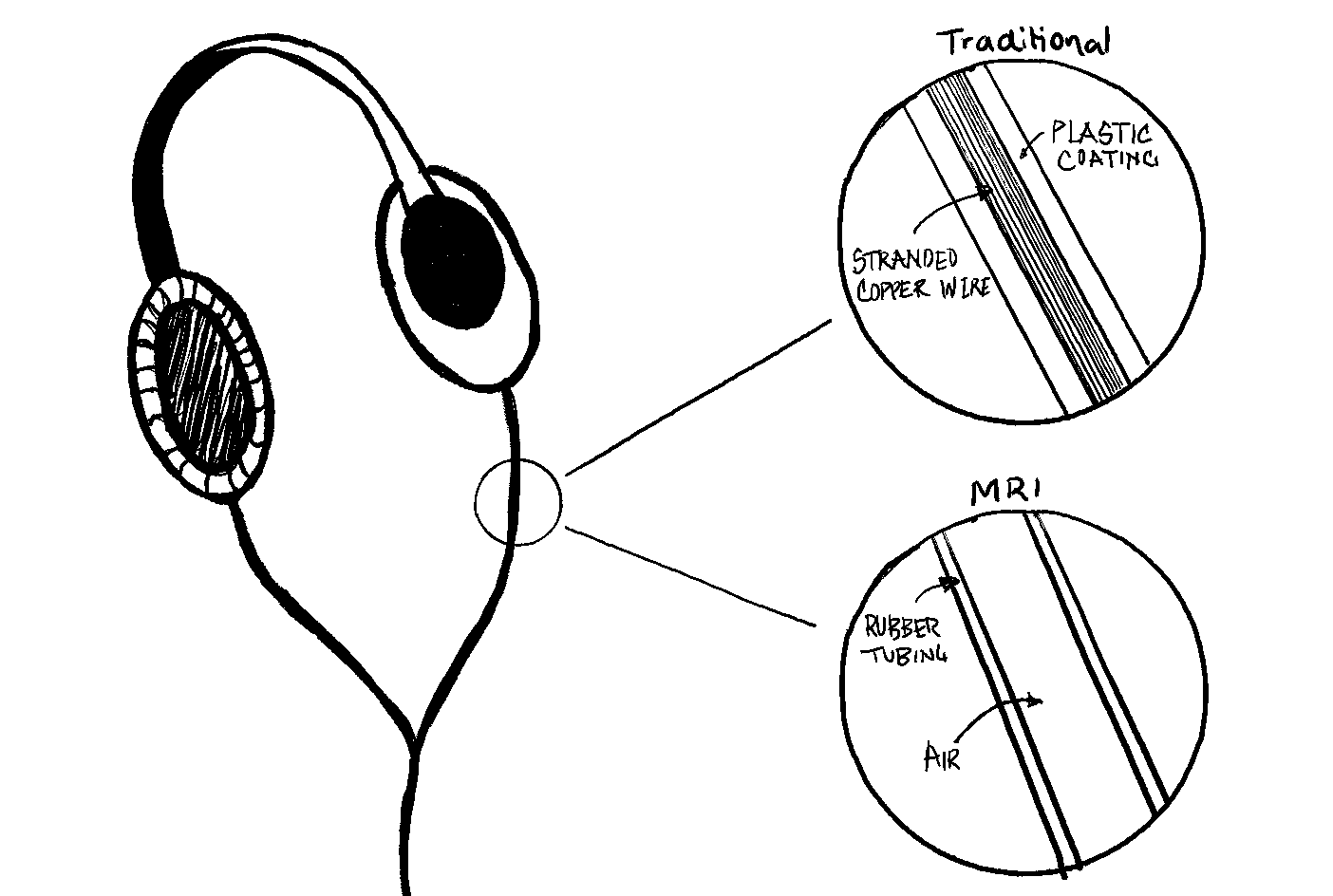How do MRI Headphones work?
Thu Feb 17 2022
I was getting an MRI the other day (much to the surprise of my fiancée I do in fact have a brain — and a remarkably uninteresting one at that) and I started thinking about the headphones that I was wearing
For those that haven't been for an MRI before, they are pretty uncomfortable affairs that can take maybe an hour. To help pass the time they have you wear headphones so that you can at least enjoy music that you can barely hear over the thumping of the machine.
The only headphone tech that I was aware of or that I'd ever really considered was the typical diaphragm and magnet drivers "driven" by electrical signals traveling down a stranded copper wire. But, hang on... wait. I'm in an MRI. I'm not allowed to have any metals or magnetic materials on me. So, why would these headphones be OK?
Was it the same principal as a microwave? In that metals don't really have the effect you imagine they'd have? Surely not — MRIs use magnetic resonance (I mean, it's in the name) not radiation like an X-Ray or CT and certainly not microwave radiation.
I started considering all the different materials that could possibly achieve a similar result. Maybe something conductive but non-magnetic with silver or gold? I mean, after all my gold dental crown was fine to be in the machine (though it did create a noticeable artifact — a little black hole of nothing where that tooth would be). Was it something mechanical? I couldn't think of anything that would achieve that same result except the old can-and-string telephones that we'd create as children did come to mind (but the headphones weren't taut?).
But then at the end of the MRI I noticed that the "cable" of the headphones was kind of "thick". Akin to a rubber hose. It turns out that it's much much simpler than any of what I was thinking.
Instead of magnetic drivers that would otherwise pose a problem with use near or inside of an MRI, there is no wire and there is no driver. The headphones are nothing but a cup with a tube extending from them that leads from the headphones away from the MRI machine into another room where the drivers are located. The sound is transported along the tube via air — a very simple solution. Though this also explains why they sound absolutely terrible.
Please enjoy this artists rendition of the design:
